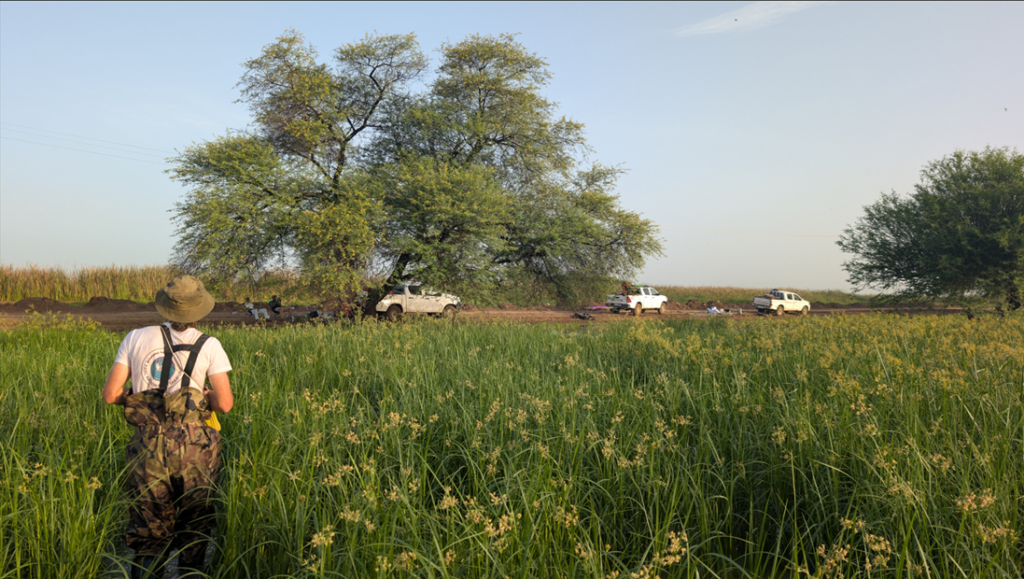
Mauritania: braving heat and humidity to study Aquatic Warblers
-
AWOM
-
Biodiversity - Flyways
Our team from the LIFE Aquatic Warblers on the Move (AWOM) project led a gap-filling survey in Southern Mauritania, to feed into new data on the species’ habitats.
From 12th to 24th September 2025, a team of twelve bird experts, including six European and six Mauritanians, carried out a two-week research mission of the Aquatic Warbler in its migrating quarters in Southern Mauritania. Despite harsh weather conditions and a lack of accommodation, they succeeded in bringing back insightful data for mapping suitable habitats for the Aquatic Warbler and in the end… even had the chance to catch one.
“Lots of field work, little rest, one shower every 3-4 days… But: amazing landscapes, nice people, many birds, and an unforgettable experience”, said Julien Foucher from Association ACROLA, a French ornithological organisation and one of the partners of the AWOM project. Association ACROLA, in collaboration with World Travelling Birds, a French-Mauritanian NGO dedicated to the study of migratory birds in Africa, gathered a team of six adventurous bird ringers to lead this two-week expedition in Mauritania. They were joined by a Mauritanian team composed of two workers from the local NGO Nature Mauritanie, a representative from the National Park Diawling, and a representative from the DILZAP (Mauritanian Ministry of Environment). Along with three drivers, the expedition group was well-established and ready to explore Mauritanian wetlands.
Starting along a river in the R’Kiz area in the south of the country, the bird enthusiasts continued their journey up North-East, towards a more desertic area.

Objective: find suitable areas where the Aquatic Warbler might like to stay during migration. “There is still not much data about suitable habitats for the Aquatic Warbler in Mauritania. Nicolas Hillier and Julien Foucher (from WTBirds and Association ACROLA, respectively) did a lot of prospecting and wanted to assess their research on the ground during the migration period”, explained Ruben Vernieuwe, a Belgian ringer who formed part of the expedition. For months, Nicolas Hillier and Julien Foucher mapped Mauritanian wetlands, assessing which zones could be of interest to observe Aquatic Warblers.
The dates of the expedition were not left to chance: Aquatic Warblers are known to migrate through Mauritania around September. “It is important to assess whether the areas are favourable for the Aquatic Warbler at this time. Our plan was to carry out as much fieldwork as possible”, explained Vernieuwe. Aside from the very important fieldwork, it does not need to be said that the team also hoped to see some precious Aquatic Warblers.
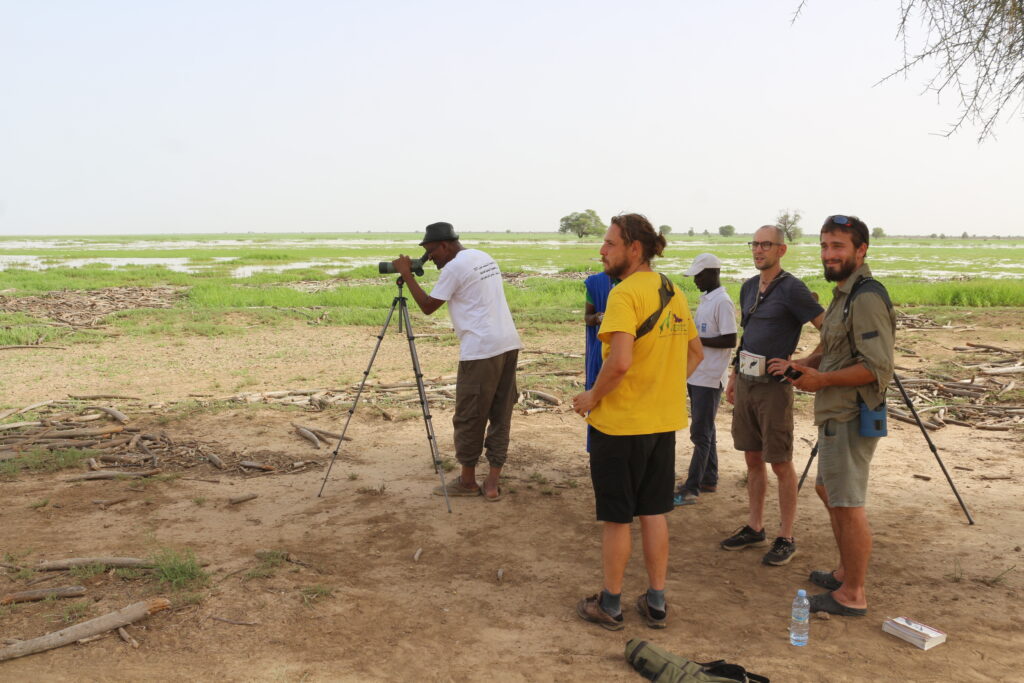
Exploring during the day, net installations at night, ringing in the morning
The expedition was nothing short of easy. Every day, the team prospected wetland areas, trying to get a view of the existing vegetation and establish whether the habitats are suitable for the Aquatic Warbler. Using a drone helped to have a good overview of the wetlands, checking if the right kind of vegetation was present and if it was properly flooded. If the selected wetlands contained enough of the reed type called Cyperus and Scirpus reeds – which Aquatic Warblers love – they were considered as “suitable”. On the contrary, a wetland containing too many “normal reeds” (also known as Typha) is not considered as suitable for Aquatic Warblers.
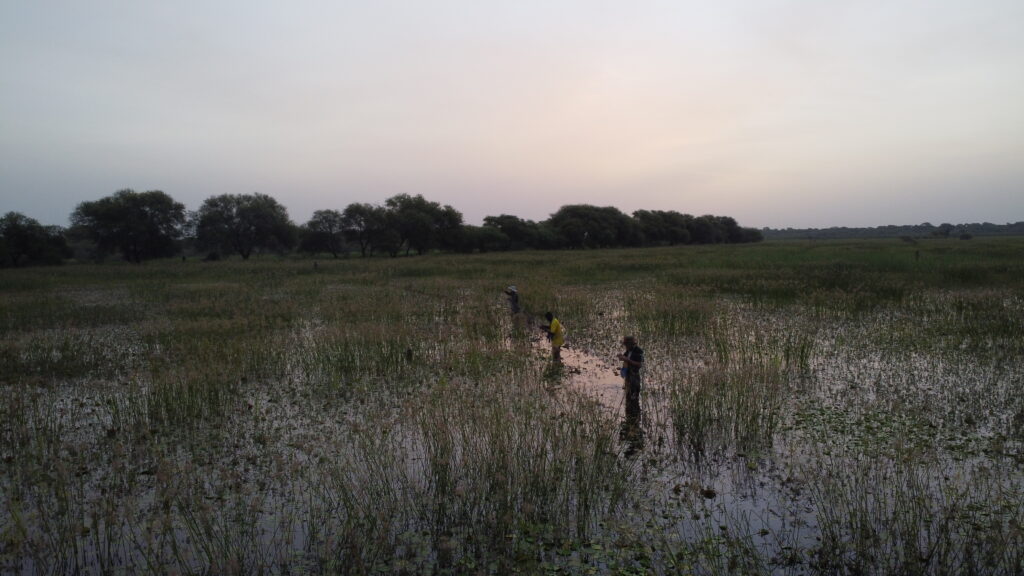
After many hours of navigating through these flooded areas under an average temperature of 40 degrees Celsius, the day was not yet over. The evening time was to install nets in areas (wetlands) that looked promising due to their vegetation. “Installing the nets is not technically complicated, but really tough physically. We had to carry the nets and wade into the wetland, which means being in water up to the chest. Add to that the dense vegetation and heat, we were covered in sweat. It was so difficult!” Vernieuwe explained. The nets were checked every half-hour at sunrise. Vernieuwe explained:
If we had a bird, we would take it out of the net really gently. We placed the bird in a cotton bag, ringed it, took all the necessary measurements, and released it. Handling the bird should not take more time than three minutes
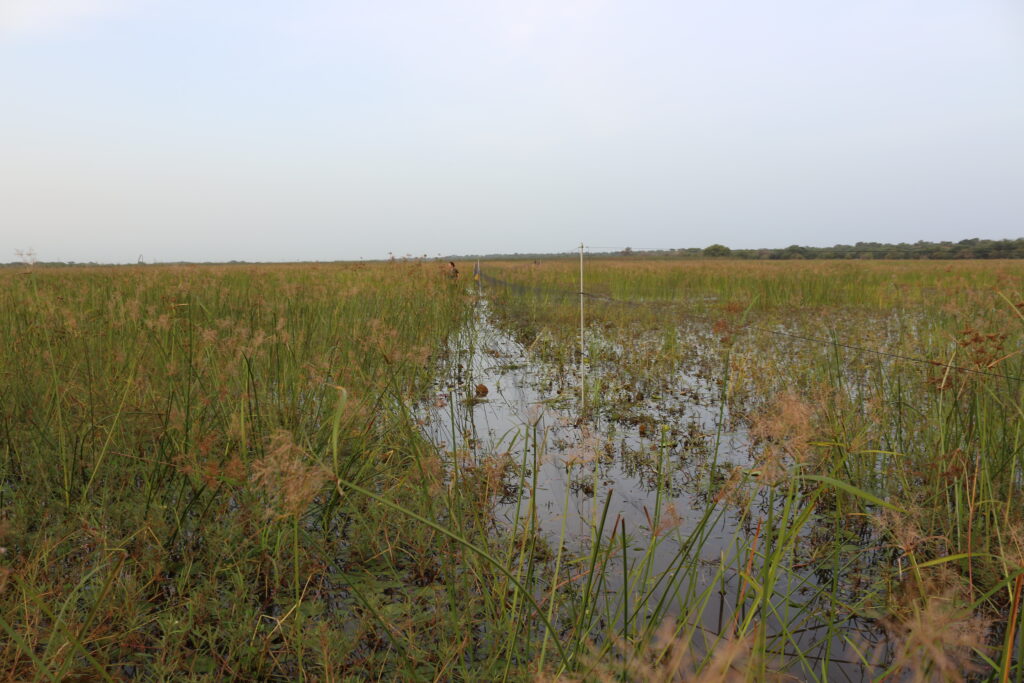
One could think that after all these efforts, the team could then be rewarded with a good night of sleep – but nature decides otherwise: “We slept in tents and at some point we bought mosquito nets because every night was full of mosquitos,” Vernieuwe described. “During sunset we would hear this sound of billions and billions of mosquitos coming. Kind of frightening!”
Hard work pays off
One morning, it was there: they caught one Aquatic Warbler! This little bird was well taken care of by the enthusiastic ringers. All measurements could be done: assessing its age, wing length, tarsus length (its lower leg), weight, adiposity (its fat) and so on. After concluding that this Aquatic Warbler was in a good state of health, the team released it to continue its migratory journey.
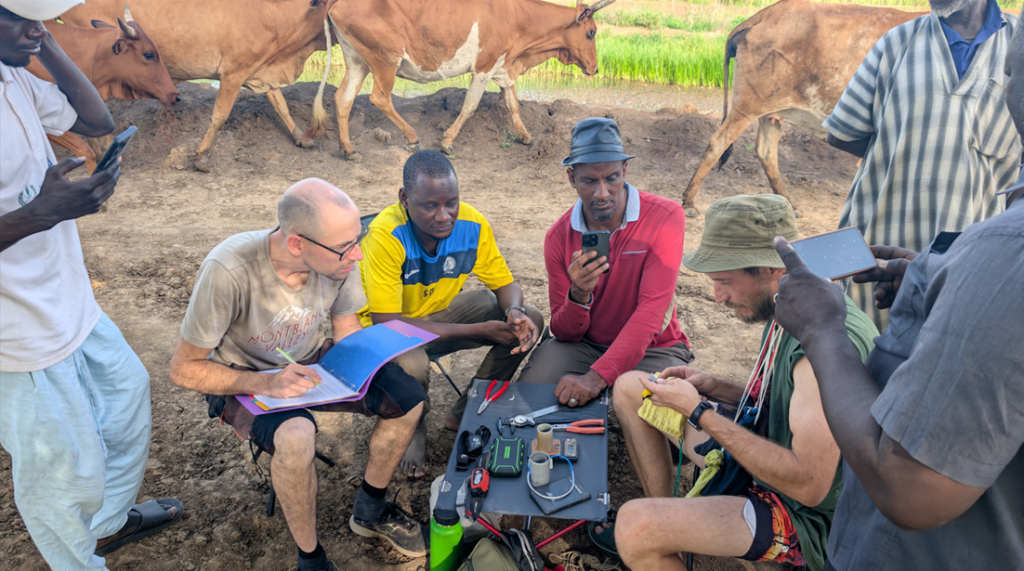
After many days of hard work, catching an Aquatic Warbler was a relief for the team. Each year, this species becomes increasingly difficult to observe, confirming its vulnerable status and the importance of projects such as the LIFE AWOM in ensuring the Aquatic Warblers’ future.
Gap filling surveys, as the one conducted in Mauritania, are a very important aspect of the LIFE AWOM project. By locating and checking sites with previously recorded autumn or spring staging durations, we will be able to better identify and fill critical gaps in data which will help ensure a better protection of essential Aquatic Warbler habitats.
